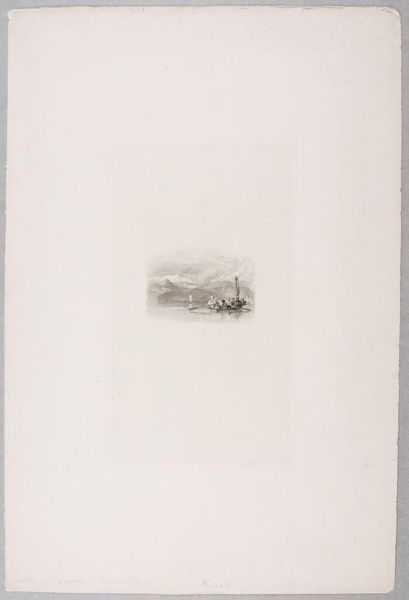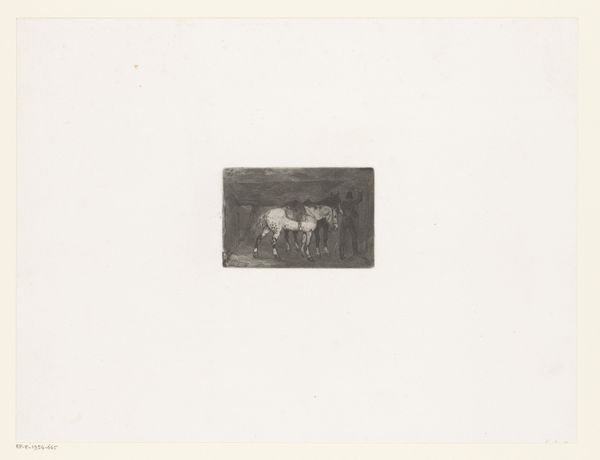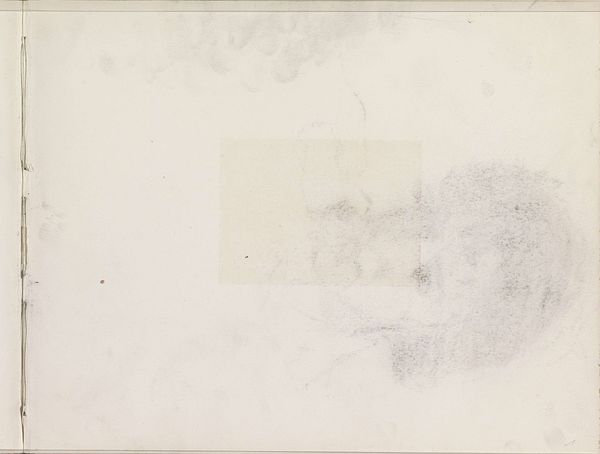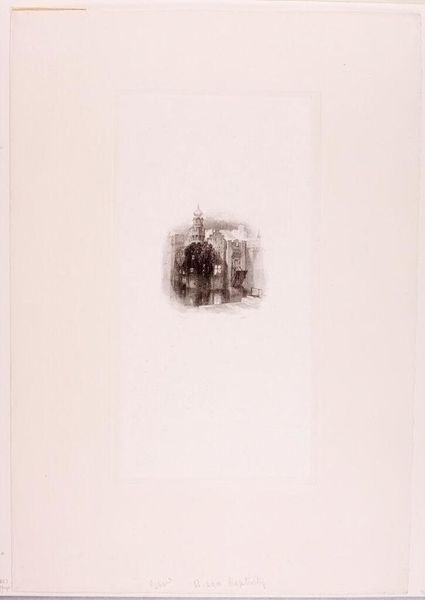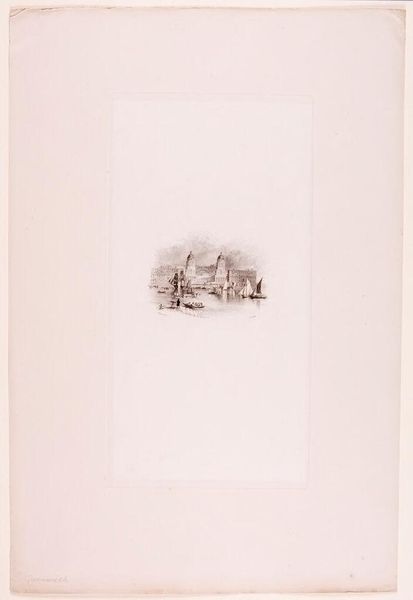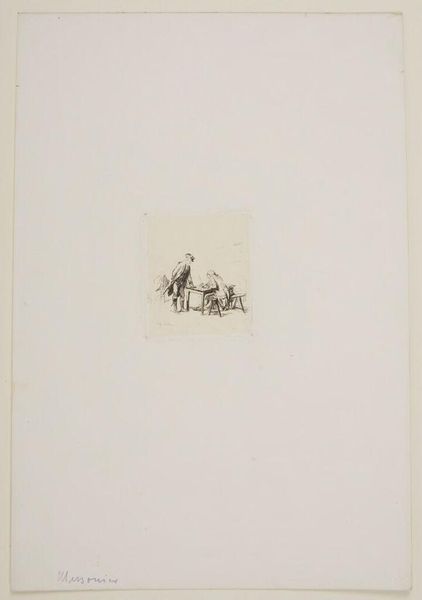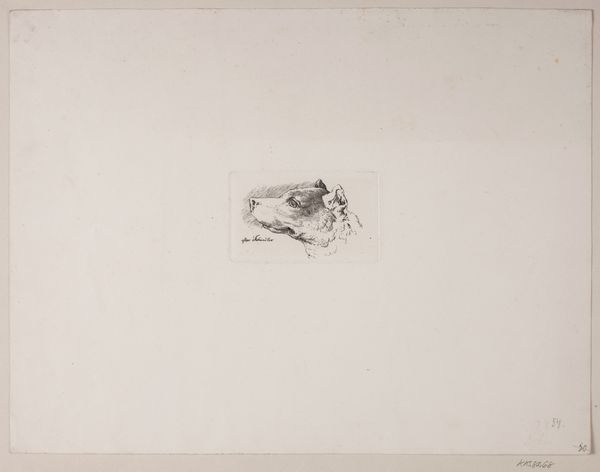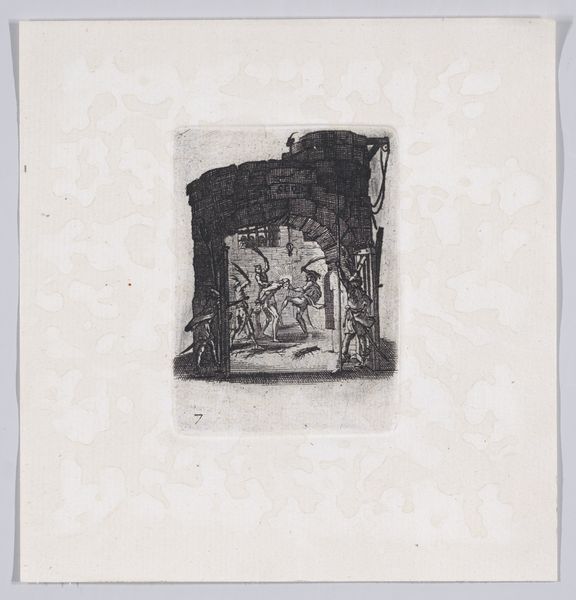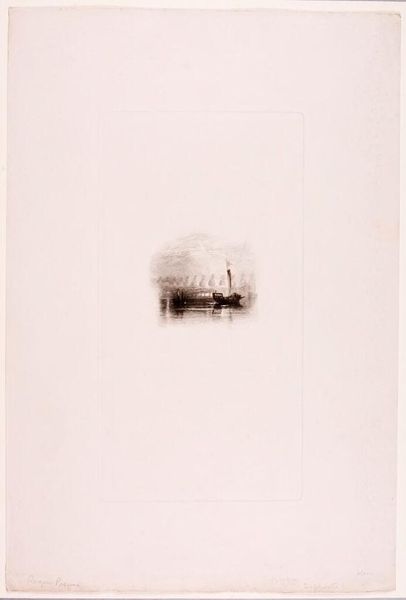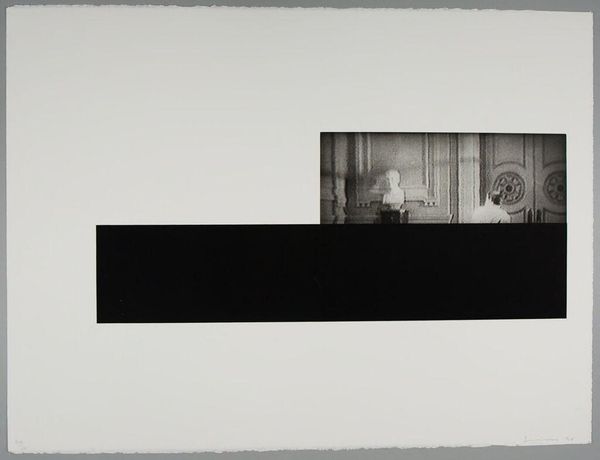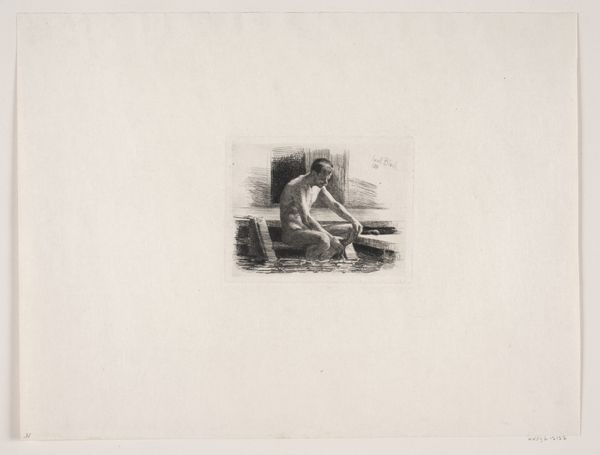
drawing, print, etching, ink
#
portrait
#
drawing
#
ink painting
# print
#
etching
#
ink
#
genre-painting
#
watercolor
Dimensions: 62 mm (height) x 95 mm (width) (plademaal)
Curator: Welcome. We are looking at G.V. Blom’s “Interiør med tre figurer” which translates to “Interior with three figures,” created in 1883. The piece is rendered in ink, etching, and print. What are your initial thoughts? Editor: Stark and isolating. There's this little huddle of men, yet they appear completely detached. The etching technique enhances the austerity of the scene. It almost feels like they're trapped in a social ritual devoid of connection. Curator: I agree. It certainly isn't a celebratory gathering. Blom, though not among the most celebrated names, gives us a peek into a very specific kind of interiority reflecting 19th-century Danish societal norms. Consider how the choice of a small-scale print influences its reception. This would likely be consumed in a very intimate setting, viewed alone. Editor: It invites speculation. The deliberate removal of background elements further spotlights them. We are prompted to wonder: What connects these people? What binds them? Is the painting implicitly critiquing middle-class male interaction in Denmark? The stiff posture certainly insinuates social anxiety, no? Curator: Indeed, you are asking if the composition is commentary on bourgeois life, where such encounters might be commonplace, a structured routine lacking warmth, yet that rigidity could easily signal restraint, maybe even status and privilege. Are we perhaps judging too harshly from a modern perspective? Editor: Well, perhaps. Still, I look at the figures' averted gazes and can't shake off an impression of disconnection, perhaps symptomatic of strict codes governing behavior at the time, but even looking at it now, are men not constantly struggling with performing a type of restrictive masculinity? Is it not our job to view it through multiple historical lenses? Curator: A fair challenge to my earlier point about a modern perspective. I tend to consider the production and reception: Prints circulated among a particular audience, reinforcing, or perhaps challenging, certain cultural viewpoints. How would the piece have been exhibited or received? Editor: That is key. Consider how its display could subtly shift interpretations across time, reflecting the public's evolving values, and that very idea of evolving societal ideas invites questions, debate. Which is why the beauty in older works persists. Curator: Precisely. This little etching invites us to interrogate social scripts, and perhaps recognize their echoes in contemporary society. Editor: I came away from this hoping we recognize how these small vignettes contribute to broader dialogues on identity, on expectations, on representation. Curator: Yes, It reminds us that even in quiet interiors, social politics quietly resonate across generations.
Comments
No comments
Be the first to comment and join the conversation on the ultimate creative platform.
